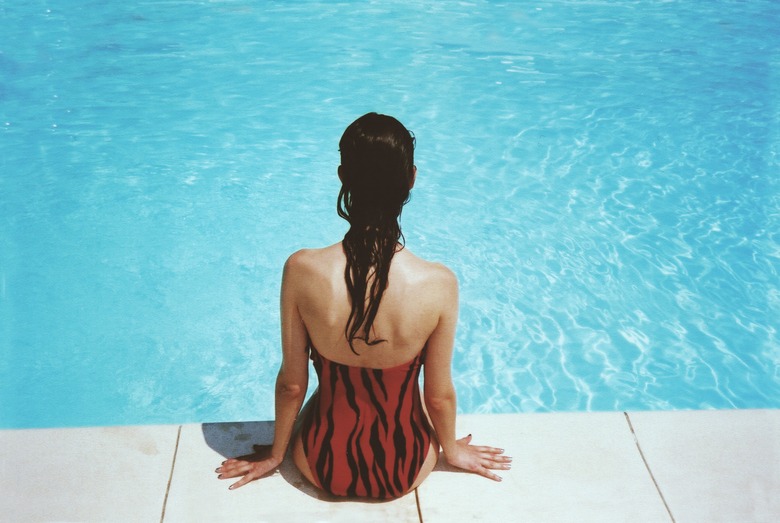Is It OK To Mix Algaecide And Shock In Pool Water At The Same Time?
Shocking your pool and adding an algaecide to the water are two ways to get rid of the sickly green color caused by algae growth, but you shouldn't do these things at the same time. Chlorine combines with the algaecide ingredients and renders them useless. The best time to introduce an algaecide , which functions best as a preventative, is after you've shocked the pool and the chlorine level has fallen below 5 parts per million.
Two Ways to Control Algae
Two Ways to Control Algae
Chlorine combines with algae and kills it, which is one of the reasons an algae bloom in the pool is a problem. If the free chlorine combines with algae, less of it is available to combine with bacteria and other harmful contaminants, and when you test the pool, you usually find it chlorine deficient. Consequently, a good way to handle the algae is to shock the pool to quickly raise the chlorine level to 10 ppm or more.
Algaecides also kill algae, but they typically work more slowly. Some of these are quaternary ammonium compounds (quats) or poly quats, and some contain metals, such as copper, silver or gold. All algaecides work by releasing positive-charged ions into the water, which combine with the negatively charged algae particles. Algaecides don't break down in sunlight the way chlorine does, so they remain available much longer.
Chlorine Enhancers
Chlorine Enhancers
Chlorine attacks the polymer chains in quat-based algaecides and combines with the ions in metal-based ones. This means that you just waste an algaecide by pouring it into a pool that you've just shocked. If your goal is to increase the potency of the chlorine, consider using a chlorine enhancer, or "super shock" treatment, that is designed to be added with chlorine. Some chlorine enhancers contain sodium bromide, and others ammonia compounds. They combine with chlorine to produce amines that kill algae. These products are designed for use when you have severe algae problems.
How to Shock the Pool to Get Rid of Algae
How to Shock the Pool to Get Rid of Algae
Before you shock the pool, it's important to check the pH and cyanuric acid concentrations. Use chemicals, if necessary, to bring the pH within the range of 7. 2 to 7.8. The closer the pH is to 7.2, the better the chlorine will sanitize. Cyanuric acid levels should be from 10 to 40 ppm to prevent the chlorine you add from quickly degrading. Because it's sunlight that degrades chlorine, the best time to shock is in the late afternoon so the chlorine has all night to work.
Step 1
Vacuum sediment from the bottom of the pool, with the vacuum set on Waste. The chlorine you add will combine with this sediment if you don't remove it.
Step 2
Brush the sides of the pool, the ladder and other fixtures to remove the algae clinging to surfaces and suspend it in the water where the chlorine can reach it.
Step 3
Check the container of the shock product you're using for the proper proportion to use (usually one bag per 10,000 gallons) and double that amount. If your pool is extremely dark, consider tripling or even quadrupling the base amount. If you use a shock enhancer, you probably don't need to add more than double the base amount. Follow the directions on the shock enhancer container for the proper amount to add.
Step 4
Pour the shock into the pool in the late afternoon or evening, and run the circulating pump all night.
Step 5
Monitor the chlorine level, and when it falls below 5 ppm, add an algaecide to prevent further algae growth.
